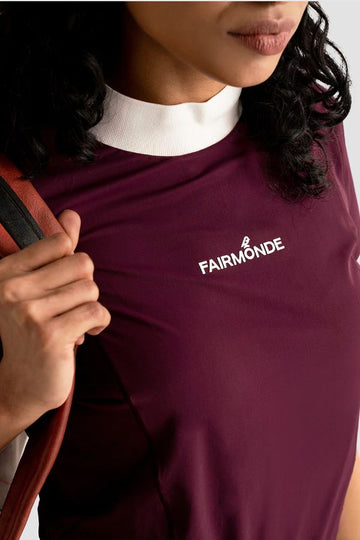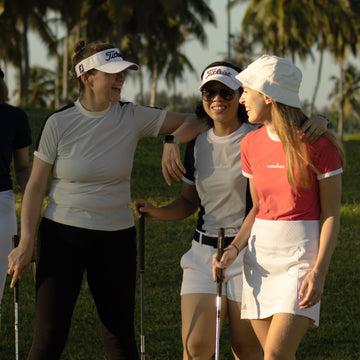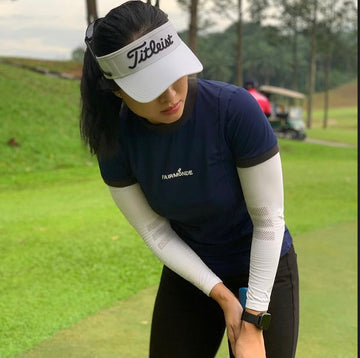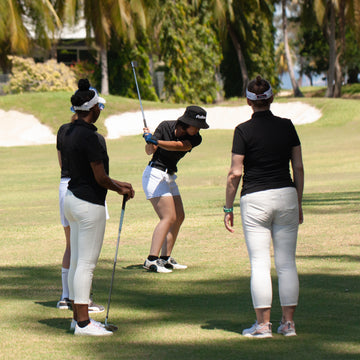Women have come a long way in the game of golf. This, on all accords as we all know, is truly an understatement. So much has been said and documented about the trials and tribulations of women, who rose against all odds with resilience and grace to overcome what no man ever had to endure.
As a sport, golf is a game that is supposed to view all opponents equally right when they step onto the tee box, taking no account for gender or distance off the tee. Yet, the blatant exclusion of women for the first 500 odd years of the game’s existence clearly showed that no one was really playing by the rules. But that’s not to say that women just sat back and accepted their fate. No, women did not. And thank goodness they didn’t. Instead, women have been changing and developing the game since and as early as the 15th century.

Mary Queen of Scots playing golf in the early days.
So, if the task of our generation is to continue the work to make golf a welcoming pursuit for all, then it’s also our job to look to the past to see how the strong and willful pioneering women who came before us made their mark to shape the game into what it is today. The mother of golf can be traced back and attributed to Mary, Queen of Scots who loved the sport so much that she built a golf course at St. Andrews in Scotland in 1552. Her influence was so impactful that it had created a viral effect of sorts, turning golf into a wildly-popular game across Scotland, the UK and all over. In many ways, she was truly ahead of her time, likely the first ever female KOL.
To mark #womengolfday, this week’s blog post from @LaurenB81867746 is dedicated to the Ladies Golf Union (LGU) and in particular to the pioneer behind this organisation, Miss Issette Pearson (later Miller). @womensgolfday #womensgolf #sportingheritage #golf pic.twitter.com/JEyNonTPVk
— R&A World Golf Museum (@WorldGolfMuseum) June 2, 2020
This new recognition gave women the opportunity to start making changes to the game once again, starting in 1893 when ace female golfer, Issette Miller invented the first golf handicap system. This helped to level the playing field and open up the sport to less experienced players.
In 1938, Babe Zaharias put women's golf on the map again, by becoming the first woman ever to compete in a men's tournament, the Los Angeles Open. No woman would compete alongside men in a PGA Tour event for another six decades.
Then, in 1950, Babe co-founded the Ladies Professional Golf Association (LPGA), the oldest women's professional sports association in America. Widely regarded as one of the greatest female athletes of all time, Babe went on to win 10 LPGA major championships. Today, there are five major women's championships, which all closely resemble the men’s majors. As far as women have come over the past few centuries, it was in the last 75 years that we saw real progress. 
Women golfers in the last few decades, continued to earn more, snagged desirable sponsorships, and even stolen the limelight from the PGA Tour boys club one two many times. They’re turning heads on the course too, making their mark in the world of golf fashion with trends that are hard not to notice. Of course, when it comes to fashion, trends do come and go. What hasn’t stayed thankfully, are the uncomfortable and impractical dress codes that focused more on being conservative rather than ease of play. Instead, women have gradually designed and paved their own way for less restrictive and more fashionable golf wear to not only play their best game, but to also look damn good while at it.
Here are some of the notable trends over the decades that have made an impact in the evolution of women’s golf fashion:


1950s
The 1950s was the era that offered a new kind of fashion liberation in the form of hem lengths. The freedom to wear skirts above the ankle gave women golfers more freedom and mobility, both on- and off-course.
1960s
The 1960s introduced bold colours, patterns and styles that were designed to make a statement. One of the most iconic fashion piece that was birthed from this time was none other than the skort (a skirt-short hybrid). The skort combined both femininity and athleticism while still delivering extreme functionality.
1970s
The 1970s was the turning point in women’s fashion on the course. Dresses were subbed out for form-fitting pants, pant suits, and even platform shoes that served as statements of power and equality to male counterparts. Women gravitates to more unisex styles, and that trend grew to be the norm.

 In 2000s, sports fashion began to focus on using more breathable, moisture-wicking fabric like polyester. The 2010s is the beginning of the marriage between fashion and function.
In 2000s, sports fashion began to focus on using more breathable, moisture-wicking fabric like polyester. The 2010s is the beginning of the marriage between fashion and function.
1980s
Who can talk about 1980s fashion without uttering the word, ‘spandex’. The golf fashion world wasn’t spared from leg-warmers and scrunchies as high-waisted pants paired with sleek belts in bright colour combinations took over the green.
1990s
Then came the 1990s where pleated khakis were probably the biggest thing. As the world took more notice of women’s on-course achievements, fashion choices became more subdued. Loud colours were traded for more classic neutrals.
2000s
The 2000s brought an end to neutrals and khakis. Women were also increasingly leveling the playing field with men and wanted their fashion to give them the edge. Women’s golf wear labels began focusing on more breathable, moisture-wicking fabrics.
2010s
By the 2010s, women’s golf have steadily increased following, gaining more equal footing. Naturally, the demand for attire that can easily transition from work to play to the 19th hole also grew. This was the beginning of the marriage between fashion and function.
Today, as we look around us to see how women’s golf has evolved both in history and in fashion, one can’t help but get a little teary-eyed. So much is owed to the strong and inspiring pioneer women who believed that we all deserved better. And because they did, so must we!















